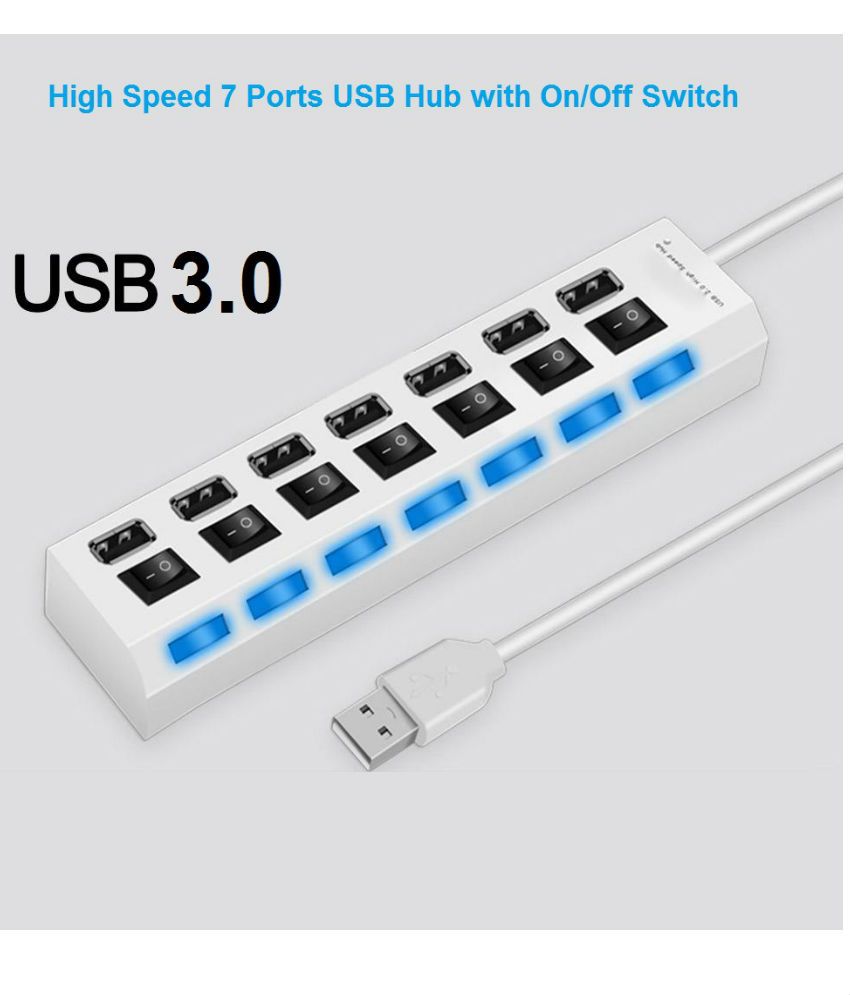


MULTI PORT USB HUB 3.0 FULL
In contrast, a self-powered hub (active hub) takes its power from an external power supply unit and can therefore provide full power (up to 500 mA) to every port. As such, each of the seven USB ports can supply power as well as transfer data. This self-powered USB hub gets power from a wall electrical plug. If a device requires more units of current than the port it is plugged into is able to supply, the operating system usually reports this to the user. Therefore, a compliant bus powered hub can have no more than four downstream ports and cannot offer more than four 100 mA units of current in total to downstream devices (since the hub needs one unit for itself). It may be desirable to use a bus-powered hub with self-powered external hard-disks, as the hard-disk may not spin down when the computer turns off or enters sleep mode while using a self-powered hub since the hard disk controller would continue to see a power source on the USB ports.Īll USB ports operate at 5 volts, but may draw or supply differing amounts of electric current.Ī USB's electric current is allocated in units of 100 mA up to a maximum total of 500 mA per port. However, many devices require more power than this method can provide and will not work in this type of hub. It does not need a separate power connection. Active cables (specialized connector-embedded one-port hubs) perform the same function, but since they are strictly bus-powered, externally powered USB hubs would likely be required for some of the segments.Ī bus-powered hub (passive hub) is a hub that draws all its power from the host computer's USB interface. A hub can be used as an active USB repeater to extend cable length for up to 5 metre (16 feet) lengths at a time. USB cables are limited to 3 metres (10 feet) for low-speed USB 1.1 devices. External "Octopus" or "Squid" hubs (with each socket at the end of a very short cable, often around 2 inches (5 cm) long), or "star" hubs (with each port facing in a different direction, as pictured) avoid this problem completely. Port arrays in which the port orientation is perpendicular to the array orientation generally have fewer blockage problems.

A horizontal array of horizontal sockets may be easy to fabricate, but may cause only two out of four ports to be usable (depending on plug width). Consequently, plugging a device into one port may physically block an adjacent port, particularly when the plug is not part of a cable but is integral to a device such as a USB flash drive.
MULTI PORT USB HUB 3.0 SERIES
The USB specification requires that bus-powered (passive) hubs are not connected in series to other bus-powered hubs.ĭepending on vendor and design, USB ports are often closely spaced. USB hubs can extend a USB network to a maximum of 127 ports. Some USB hubs may support power delivery (PD) to charge the laptop battery, if self-powered and certified to do so, but may be referred to as a simple docking station due to the similar nature of only needing one connection to charge the battery and connect peripherals.Ī "star" "short cable" external USB with the plastic casing removedĪ USB network is built from USB hubs connected downstream to USB ports, which themselves may stem from USB hubs.

"Short cable" hubs typically use an integral 6-inch (15 cm) cable to slightly distance a small hub away from physical port congestion and increase the number of available ports.Īlmost all modern Laptop/notebook computers are equipped with USB ports, but an external USB hub can consolidate several everyday devices (like a mouse, keyboard or printer) into a single hub to enable one-step attachment and removal of all the devices. Physically separate USB hubs come in a wide variety of form factors: from external boxes (looking similar to an Ethernet or network hub), to small designs that can be directly plugged into a USB port (see the "compact design" picture). All devices connected through a USB hub share the bandwidth available to that hub.
MULTI PORT USB HUB 3.0 SERIAL
A four-port "compact design" USB hub: upstream and downstream ports shownĪ USB hub is a device that expands a single Universal Serial Bus (USB) port into several so that there are more ports available to connect devices to a host system, similar to a power strip.


 0 kommentar(er)
0 kommentar(er)
